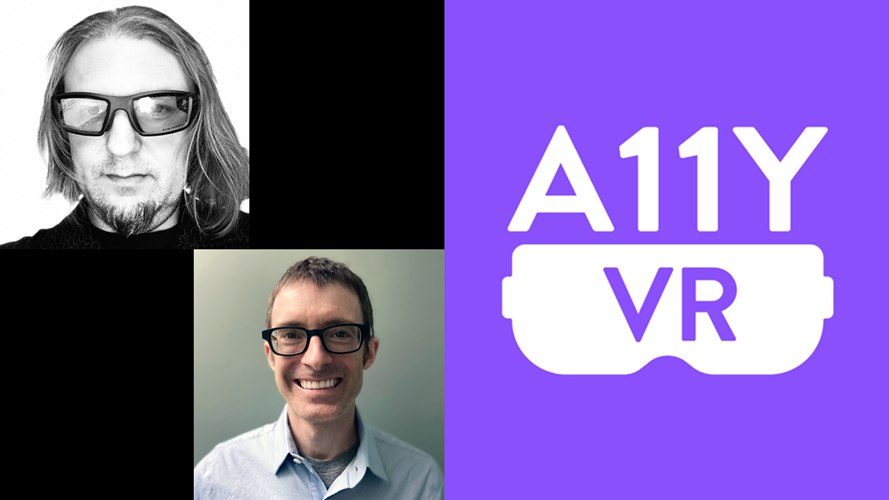Summary

The augmented reality technology wave provides us with a chance to build accessible hardware and software solutions from the ground up, rather than as an afterthought.
Xander and XRAI Glass are aiming to caption the world through smart glasses. Here’s your chance to get a glimpse of these augmented reality (AR) glasses.
Founder and CEO Alex Westner shares what his company has learned from testing with customers and how these insights have helped shape the product. They believe that simplicity, reliability, and privacy are essential for the experience to be effective.
Q&A with Alex and Paul
We ran out of time and couldn’t get to all the questions. Alex and Paul were generous enough to answer the unasked questions.
Q: How do you ensure that people can continue to rely on your tech if your business shuts down?
Alex: Our glasses are standalone appliances. While we may make continuous improvements in the software, customers will not be forced to update their glasses. So, once you buy them, they can work as-is for as long as they continue to hold a charge (several years?)
Paul: For XRAI, our intention is to allow on-device transcription. If that exists, in theory users will be able to use our service offline for some time without our service being up. However, as a startup that just launched, we have admittedly not planned too far ahead for contingencies of our business shutting down just yet 🙂
Q: Given that not all people with hearing disabilities use captioning, what scope is there to include a sign language interpreter overlay as an option?
Alex: Great question, not one we’ve heard before. This would be an interesting challenge to take on and would certainly require more research with customers.
Paul: It has been discussed at a high level, but not something we are prioritizing on our roadmap at this point.
Q: How do you deal with people behind you? and how about people who speak a lot, and sometimes over each other?
Alex: The microphones in our glasses are steered to capture speech from people in front of the wearer—in the direction the wearer is facing. In this “cocktail party” scenario, people who are literally talking behind your back may get ignored, which is usually the desired behavior (best to focus on the people in front of you). We can caption someone who speaks a lot. If people talk over each other, the glasses will do their best to capture the conversation, but it will be more of a challenge—it’s hard for anyone to follow a conversation when people are talking over each other!
Paul: Our device microphones work fairly well for picking up audio from any direction. However, even better, we allow any sort of Bluetooth microphones to connect, which allow us to access the best directional mics you can buy. These pick up audio well from any direction. Further down our roadmap, we plan on adding in directionality of who happens to be speaking.
Q: What is the biggest technical challenge that you are currently facing?
Alex: We’re looking at tradeoffs between battery life and accuracy.
Paul: For better or worse, we are not hardware developers. As such, our software is at the mercy of the hardware we run on. The hardware is getting better and better, but we will always be held back based on the hardware that exists.
Resources
Highlights
Watch the recap to learn how we might be able to use AR solutions early in the tech lifecycle for deaf or hard of hearing users and where those technologies may allow us to go in the future.
- Alex Westner’s Xander story
- Paul Mealy’s XRAI story
- The decision to use augmented reality for captioned glasses
- What they’ve learned from customer feedback
- View and learn how the AR captioned glasses work
- Privacy concerns with captioned glasses
- Audience Q&A with Alex and Paul
Video
Bios
Alex Westner has spent 20+ years leading product strategy at iZotope, Gibson, and Fidelity. He earned an MS from MIT Media Lab for acoustics and audio processing and is a former electropunk keytarist.
He began his career in engineering, researching microphone arrays and the “cocktail party problem” at the MIT Media Lab — getting computers to pick out individual voices in a room. He continued to spend 18 years as a product leader in audio and music technology companies, shipping successful products that try to analyze and understand sound. One standout, “iZotope RX,” became known as Photoshop for Sound earned an Engineering Emmy Award, and has become an industry-standard tool.
Most recently, he’s immersed himself in the most profound human problem related to audio — people who have trouble hearing altogether. He co-founded Xander, setting its vision on providing relief for the 1.5 billion people around the world who struggle with the effects of hearing loss. Follow Alex on Twitter.
Paul Mealy has spent the past 20 years establishing innovation labs at various organizations, from small startups to Fortune 100 organizations. Paul is an internationally published author on Virtual and Augmented Reality and has specifically targeted developing technology solutions for children’s education and assistive technology solutions for all people.
As Chief Product Officer at XRAI Glass, Paul is responsible for designing experiences that uplevel all user interactions and communications. Visit Paul Mealy’s website.
Virtual Reality (VR) Accessibility Consulting Services
Our years of experience working with virtual reality and being speakers on the topic have given us a unique perspective when it comes to consulting on VR projects. If you’d like to innovate in the accessibility of VR please, please contact us to discuss how we can help you.